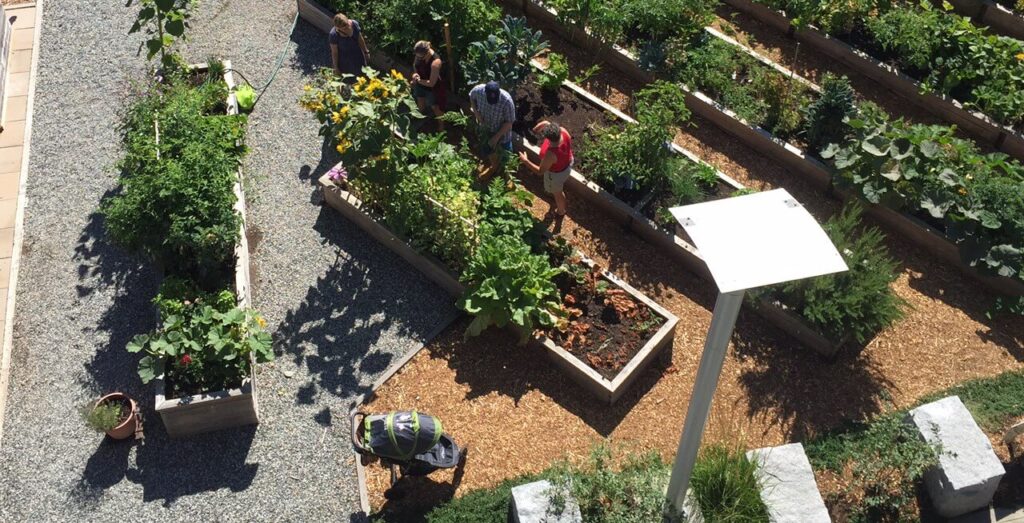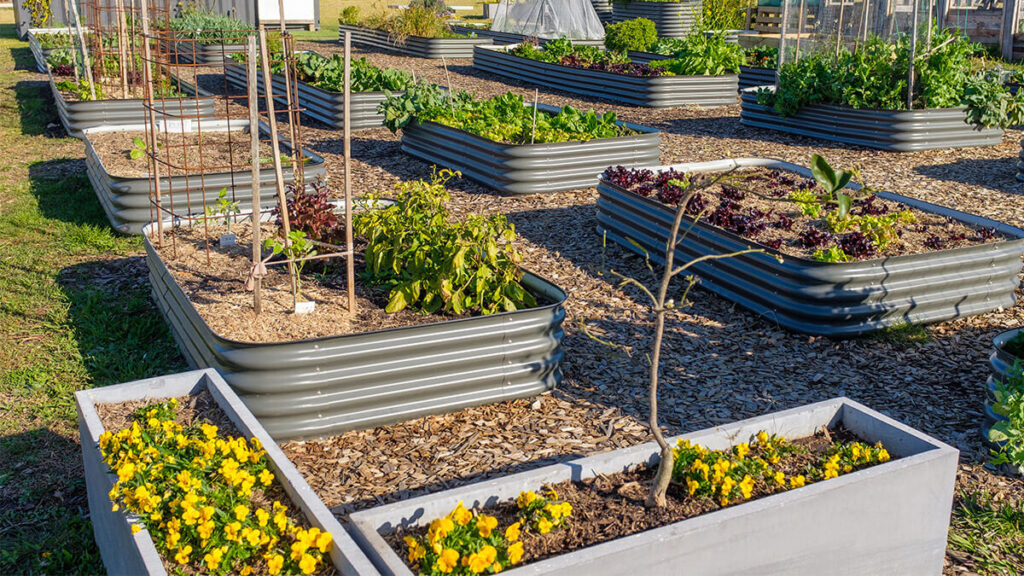On October 19th, 2017 The Field Museum, in collaboration with Chicago Ideas Week, facilitated a photo exhibit and conversation concerning urban gardening in Chicago, in which the Peterson Garden Project was highlighted. During the event, Dr. Alaka Wali, Cultural Anthropology Curator at the Field Museum, and I, Dr. Molly Doane a socio-cultural anthropologist at UIC, discussed our research project, “Cultivating Wellbeing: The Cultural and Ecological Significance of Urban Gardening in Chicago.”
The project is a collaboration with Dr. Emily Minor, a UIC Biologist with expertise in urban ecology, and Dr. Joanna Michel, an ethno-botanist in UIC Community Medicine. Our interdisciplinary project seeks to understand how community gardens contribute to urban biodiversity and global wellness. We are working in 24 gardens across the city, with a special focus on ten gardens in which we are carrying out in-depth ethnographic research. Our photos and bios, as well as those of some of the students working on the project can be found here: https://chicagocommunitygardens.weebly.com/
Sites in the research include Peterson Garden Project gardens, several gardens hosted by NeighborSpace, Chicago Park Service gardens, and a few independent gardens unaffiliated with a larger organization.

While we know intuitively that gardeners, by planting, growing, and tending plants, contribute to their own health and to the health of the environment in the city, we are interested in documenting and analyzing how people use their garden spaces, how they feel about them, and why. In addition, we are documenting the birds, wild and domestic bees, dragonflies, and butterflies present in the gardens. We are interested in the relationship between what people grow, how garden spaces are designed, and what pollinators they attract. Our concept of wellbeing extends beyond the human to include the non-human inhabitants and elements of garden spaces.
Our collaborative project utilizes the wide lens of urban gardening to explore how wellbeing is cultivated through the production of plants that support cultural familiar practices, connection to place, or to new visions, ideas, and practices for the future. It asks: why do gardeners garden? What visions of neighborhood, community, and ecology are emerging within this rich and varied movement?
Our interest in the connection between the practice of gardening and wellbeing extends to the stories of all gardeners. This year, we have been particularly riveted by the stories of newly arrived refugees coming from agricultural backgrounds. For these gardeners, the practices of planting and tending can be central to maintaining not only a healthy diet, but also a healthy sense of self and purpose. The feel, look, and smells of garden spaces as well as the plants and animals they contain, connect in specific and important ways to familiar traditions, communities, and places.
For example, one gardener who I will call Mu, a woman of Karen ethnicity, which is an oppressed minority group in Myanmar (Burma), comes from a family of rice farmers. As a small child she would accompany her parents on their daily routine. Together they walked from home to their several rice fields in the hills above their village, worked in the fields, and walked home again in the evening. In their yard they kept a kitchen garden, growing roselle, chili, mint, bitter melon, amaranth and okra. In Chicago she grows all of these things.
Many foods are valued for their health-giving or medicinal properties. Mu says: “We eat okra and bitter melon for diabetes. “ She tells me that she cuts the okra and soaks it in water overnight. In the morning her husband, who is diabetic, drinks the water.

Mu spends as much time as she can in her community garden. Her cherished routine is to walk with her husband from their cramped apartment in Rogers Park to their garden, which is five miles away in Albany Park. The daily routine of walking, Mu says, has improved her physical and mental health, both of which were suffering before she joined the garden.
As an anthropologist, I find Mu’s story interesting at many levels. She uses the garden to grow familiar foods that connect to her heritage, and to connect to the family farming traditions she left behind, and which her own children have never experienced. It supports non-western medical knowledge, including traditions in which food is a kind of daily medicine. By walking to her garden, she re-inscribes the geography of a Burmese rice farmer, who walks to the fields, in her own daily routine. Gardening connects her to other Burmese in her Albany Park garden, as well as to other gardens where Burmese refugees work, including Hello Howard and Ruby Garden. For Mu, gardening transforms Chicago from a place that is strange, alienating, and cramped to a place that is familiar, connected, and spacious. In this and many other ways, gardens figure in the biographies and geographies of urban gardeners, and promote wellbeing in both predictable and unexpected ways.
We are interested in hearing the stories that gardeners tell about what they grow and why. Did gardening fix a problem, fill a gap, provide community, connect you to nature, alleviate an illness or stress, or in some way make the city a better place for you? If you have a gardening story you want to tell us, please let us know! You can contact Molly Doane at [email protected] if you would like to participate in our research or if you have questions.
Other resources:
Same Day Flower Delivery in Sydney: How to Get Fresh Flowers Delivered Quickly
How to Select the Perfect Wedding Flowers for Your Big Day
